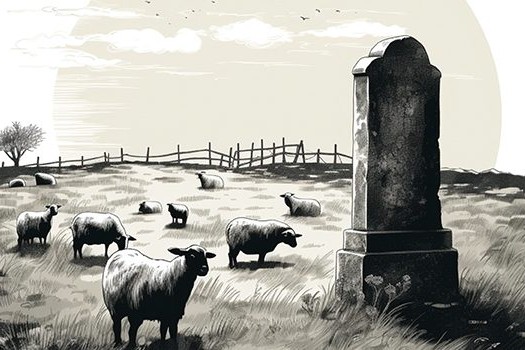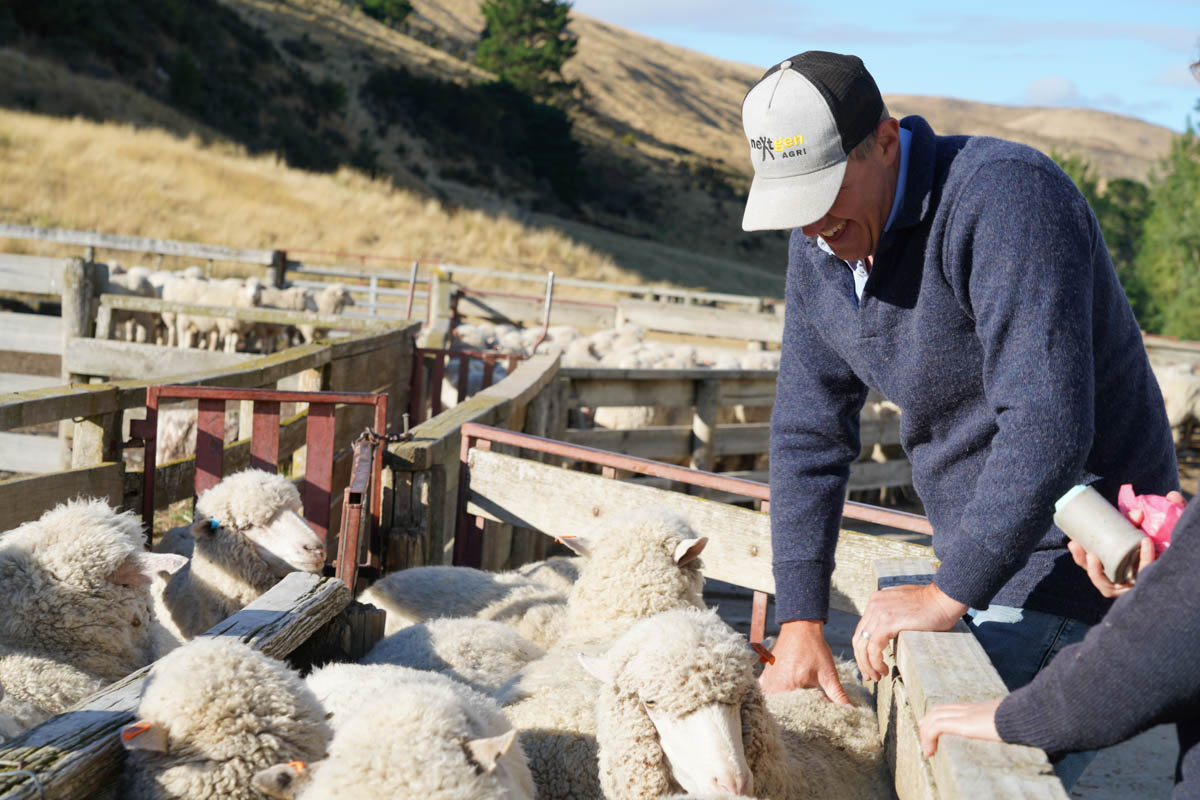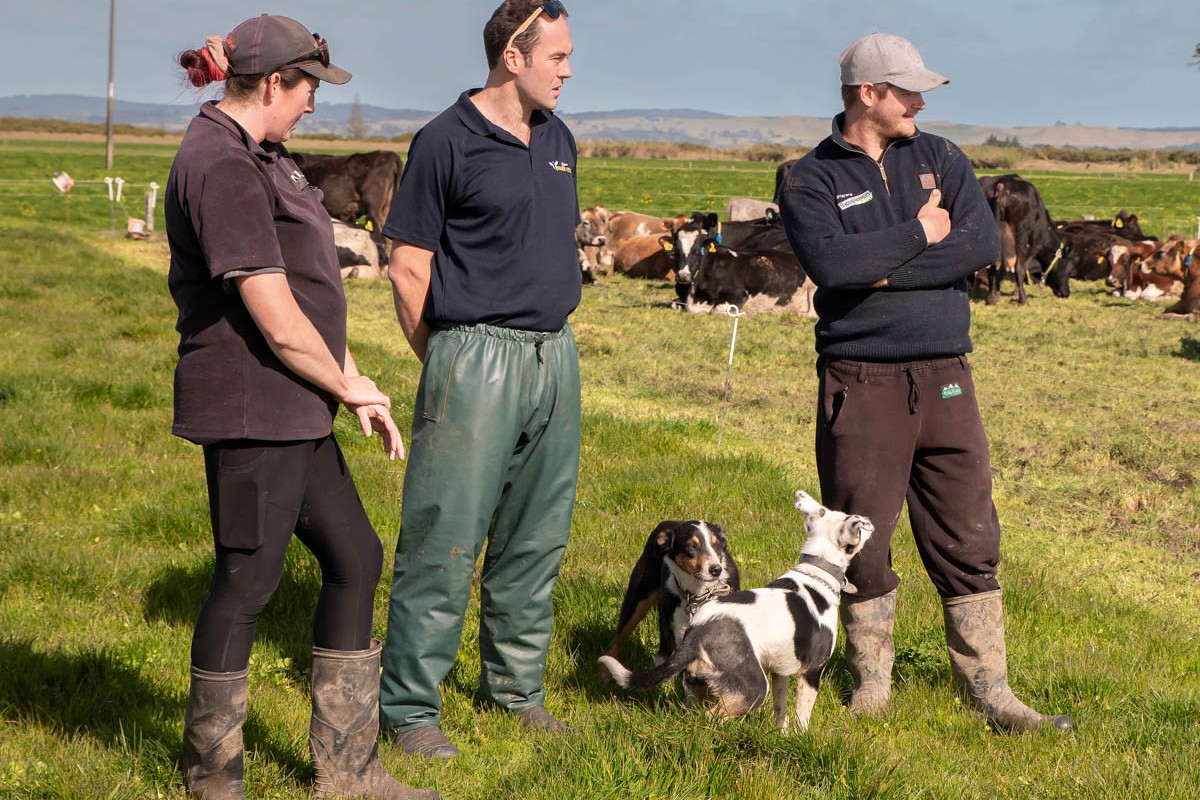Mortality needs culture shift
Sheep mortality in lambing could be compared to the negativity associated with bobby calves, a Marlborough farmer warns. Joanna Grigg reports.

Reducing sheep mortality rates needs a culture shift and more research funding. In his recently released Kellogg Report ‘Addressing mortality in lambing systems’ Richard Dawkins defines the problem of mortality and sets the case for addressing it.
The Marlborough farmer calls for a change in farmer attitude, especially when managing multiples and hoggets.
“Not scanning for triplets and ignoring the issue, does not absolve responsibility.”
Financially, farmers will be better off investing in better lambing management. He calculates a triplet- bearing two-tooth is worth $1445 in invested time and feed, animal health and the cost of raising a replacement animal. He queries selling triplet-bearing ewes as another way to solve the problem.
“Selling ewes in lamb with triplets is a huge lost opportunity financially.”
In his report, Dawkins reviewed existing industry records, and concluded that between 10% to 40% of lambs scanned in utero don’t make it to weaning. The industry average lamb death rate from scanning to weaning is 24%. It’s much higher for triplets – typically one dies out of three born (33%).
Ewes themselves are at risk – especially triplet-bearing ewes, with Dawkins’ report estimating 10% die as an industry average. Some mobs are much higher.
Data was gathered from 10 farmers, 10 industry professionals and three case studies. He reviewed existing research and commented that data was sparse at times.
“Farmers typically don’t have accurate death rates across mobs.
“Managing triplets separately and monitoring performance is actually quite a low bar to start from.”
If you don’t measure and understand death rates by each mob, it is difficult to improve, Dawkins says.
He appreciates increased discussion about lamb mortality could lead to negative market reaction. Courage is required in accepting and addressing potential issues within the sector.
He compares it to the bobby calf issue in dairy, where market forces are driving change – not animal welfare regulations.
“We need to keep ahead of the market and not just be reactive.”
The National Animal Welfare Advisory Committee (2018) said that if a dam is unlikely to raise offspring, then the offspring should be fostered, hand-reared or killed humanely. This is similar to the recommendations for bobby calves, making the Fonterra-driven changes on farm relevant and comparable to lambs, Dawkins explains.
He interviewed meat processors for their opinion. While there are no market signals that wastage is an issue, there was unanimous agreement among contributors that it could be a trade barrier, he said. Lambing deaths from storms and subsequent hypothermia, mismothering and starvation seem to be ‘trumped’ and acceptable within a pasture-based, natural and free-range system.
“But this begs the question of how accurate consumers’ understanding of wastage is – for example that sheep have two teats but can have three or more lambs.”
Many industry experts interviewed agreed the industry is in a period of grace, he said. Farmers must enhance survival before legislation or market requirements change, particularly in high-risk animals such as triplets and hoggets.
It should be a win:win. Dawkins sees huge opportunities for farmers to get specialised training to manage pregnancy and lambing better, to rear more lambs and make more money. The lowest hanging fruit is selecting the appropriate genetics, body condition scoring and feeding of the entire flock.
The report took a deep-dive into three case studies. One was Dawkins’ own home farm, The Pyramid, with its system of indoor lambing. A hybrid indoor/outdoor system (Wairarapa)and a shepherded outdoor lambing (Tasman Romney stud) were also studied.
The Pyramid’s long-term lamb death rate was 24% but indoor lambing of high-risk triplet-bearing ewes has seen it drop to 14% over five years, across the whole farm. This is at a 190% to 210% scanning. The benefits have extended beyond just the multiples, as the Dawkins have had more time to shepherd the twins and feed them better. The business is about $30,000 better off, including all costs and labour at $25/hour, he says.
Dawkins calls for government funding into sheep mortality research. This should include comparing ewe and lamb mortality rates across different farm systems. Orphan lamb rearing and new markets/outlets for lambs should be investigated. For example, large-scale rearers or pet adoption, he says.
“The Sheep CRC in Australia should be analysed and the appropriate framework be applied to a New Zealand model.”
Help should come in the form of discussion group days and visual resources on sheep husbandry. Massey University has some comprehensive resources but recent national research is on the environment – not production, he says.
“We need instructional videos, visits to intensive farm systems, autopsy demonstrations and models to simulate assisted births.”
Dawkins would like to see Primary ITO unit standards focusing on lambing management with a practical component. He questions whether shepherds are proficient at identifying animals that require assistance.
“Identifying udder infections, poorly placed teats, a stressed ewe or a fading lamb is a specialist skill, and it appears there is a lack of training in this area.”
He describes a case study farm where they used a drone to identify ewes or lambs in trouble.
One widely adopted management approach, he says, is to minimise triplets by restricting feed at tupping.
“This is actually limiting the genetic potential of your ewes – another lost opportunity.”
Selling triplet-bearing ewes to specialised rearers is another option.
“But in an ideal world, everyone would have a plan and the tools to take advantage of triplets.”
Dawkins says the first step is an increased focus within the industry on monitoring and recording. He calls for the Beef + Lamb NZ Economic Service to monitor death rates by region and breed.
“Documenting and quantifying the size of the problem will be the first step in solving it.”
His report is a must-read for sheep breeders.
Triplets welcomed
Richard Dawkins spends a fair part of his winter in the lambing shed. The Pyramid has integrated shed-lambing for triplet ewes and this high-scanning/high input lambing model is a financial goer.
“We welcome scanning 30% triplets, when once they were a liability.”
He says triplets are potentially the most productive, profitable and eco-efficient animals on the farm.
In a recent step, the Dawkins’ indoor system now includes singles, where dystocia can be an issue with high birth weights, particularly in hoggets.
Dawkins’ 2023 Kellogg report on sheep mortality concludes indoor lambing, using existing sheds and portable yarding, in some shape or form, could be a goer for some farms.
On a personal level, the Dawkins have nearly halved their triplet lamb death rates from 33% to 17–20% and reduced triplet ewe deaths from a long-term average of 10% down to between 2% and 5%.
But the low-hanging fruit for many, says Dawkins, is actually improving outdoor lambing methods. His report focuses on outdoor lambing strategies such as improved feeding, management of lambing times by using ram harnesses for precise lambing dates and improved shepherding during lambing.
“And this all needs more sheep production research at a high level, and technical advice to farmers.
“I’d love to see mortality be set up as a separate programme like Wormwise – with funding and publicity.”
Education is the way to help farmers design a system to get ideal body condition scores for ewes pre- and post-lambing, and better metabolic and health management. Once lambing is underway, it is having the understanding of the paddock shelter, layout and how to identify at-risk lambs and intervene in a positive way.
“It is unfortunate triplets are put in the too-hard basket?”
He doesn’t believe farmers should short-scan and simply put triplets in with twins and take an “easy-care” no-visit/intervention approach.
“If mating results in a high proportion of triplets, farmers should invest in the required farm systems and infrastructure to ensure that death rates are kept as low as possible.
“We must consider if the conscientious consumer will view these preventable deaths as acceptable, particularly when accessing premium markets”
Composite flocks with high scanning would be the likely ones with potential issues, he says.
“If one part of the sheep sector comes under fire, then it will most likely be every farmer’s issue to address.”
Farmers also need to be proactive in managing hoggets around lambing, he says.
About 30% of NZ ewes are mated as hoggets.
“Bearings, difficult births and under feeding are the main causes of hogget lamb wastage which can be prevented. Embryonic loss is also significant but requires significant research funding to discover solutions.”
- Richard Dawkins’ report is available at the Kellogg Rural leadership page.
Quotes from Richard Dawkins’ report
“I hate triplets” is the wrong mindset. Education is required to help people get their heads around the opportunity. What’s my bank balance going to look like if I increase survival? Farmers are not fully aware of the cost of feeding an animal for two years, then the opportunity cost of losing all the future production. – Jeff Sewell, Sheep pregnancy tester.
“Mortality is always topical and I feel we have gone over the top with fertility. When scanning over 200%, we are seeing some horrific losses and it is an elephant in the room. Too much focus is put on scanning percentages. While it is nice to have the potential, potential doesn’t pay the bills; lambs sold do.” – Dean Rabbidge, Southland Farmer.
“Before clear guidelines can be developed for the management of triplets bearing/rearing ewes and their lambs additional research is required. Future studies need to examine the impacts on both the ewe and her lambs of varying feeding regimens in both pregnancy and lactation, across the body condition score range. In addition, knowledge of the impacts of shelter and other paddock factors, stocking rate, mob size, and human intervention is required. Future studies must be large enough in size to allow for the evaluation of lamb survival and should present the impacts of the various interventions on litter birth weight variation.” – Prof Paul Kenyon (2022).
HOW CAN NZ FARMERS IMPROVE SURVIVAL DURING THE LAMBING SEASON?
Recommendations from the Kellogg ‘Addressing Mortality’ Report, Richard Dawkins, 2023.
- Employ best practice management throughout the year.
- Identify the preferred management system through the lambing period and select genetics and breed fecundity accordingly.
- Better understand land resources such as slope, aspect, prevailing wind, natural hazards and shelter.
- Identify high-risk animals, such as triplets and hoggets, and separate and manage accordingly through lambing.
- Study different methods of intensive management and evaluate how they might fit into existing systems.
- Increase monitoring and recording of KPIs, especially those relating to lamb survival and performance.
- Improve knowledge and skills around animal husbandry.
- Culture shift where animal welfare is considered paramount and high wastage rates are frowned upon and viewed as unacceptable by peers.




